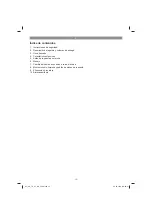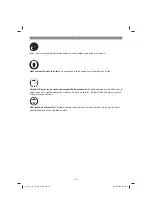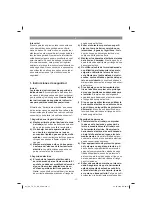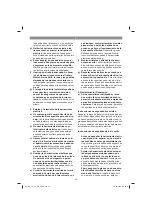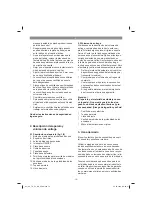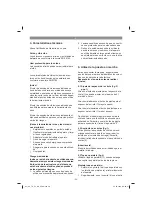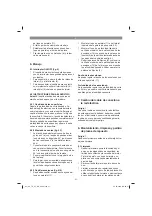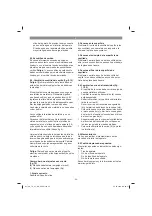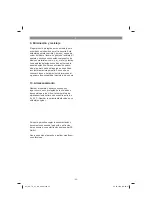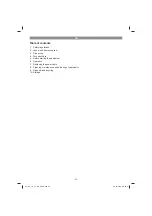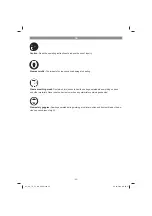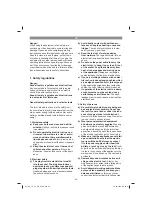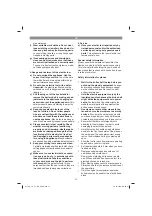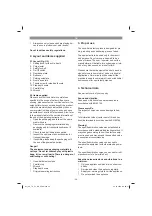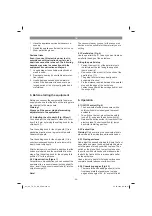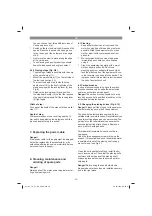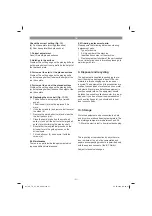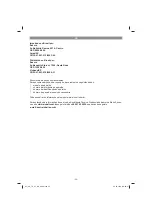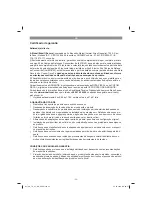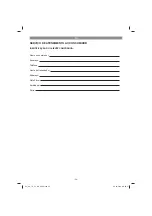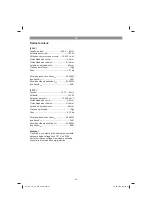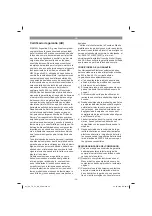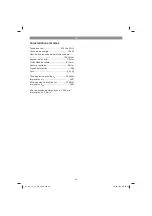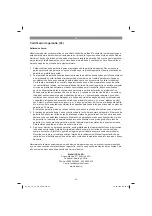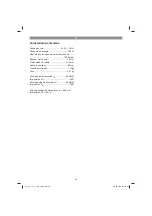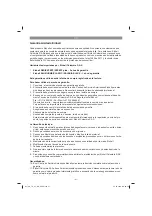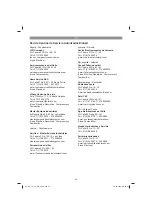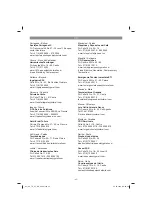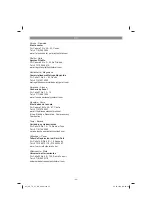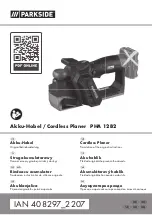
GB
- 29 -
•
Have the appliance serviced whenever ne-
cessary.
•
Switch the appliance off when it is not in use.
•
Wear protective gloves.
Residual risks
Even if you use this electric power tool in
accordance with instructions, certain resi-
dual risks cannot be rules out. The following
hazards may arise in connection with the
equipment’s construction and layout:
1. Lung damage if no suitable protective dust
mask is used.
2. Damage to hearing if no suitable ear protec-
tion is used.
3. Health damage caused by hand-arm vib-
rations if the equipment is used over a pro-
longed period or is not properly guided and
maintained.
5. Before starting the equipment
Before you connect the equipment to the mains
supply make sure that the data on the rating plate
are identical to the mains data.
Warning!
Always pull the power plug before making
adjustments to the equipment.
5.1 Adjusting the chip depth (Fig. 3/Item 1)
You can adjust the chip depth in steps of 0.1 mm
from 0 to 2 mm by turning the setting knob for the
chip depth (1).
Turn the setting knob for the chip depth (1) in a
clockwise direction to set a greater chip depth.
Greater chip depth
Turn the setting knob for the chip depth (1) in a
counter-clockwise direction to set a lower chip
depth. Lower chip depth
After
fi
nishing work, set the chip depth so that the
knives are lowered and thus protected from da-
mage. Turn the setting knob for the chip depth to
position “0” for this purpose.
5.2 Chip extraction (Figure 1)
For optimum chip extraction you can connect the
equipment to a vacuum cleaner (not supplied). To
do so, insert the vacuum cleaner tube (c) into the
chip discharge (2).
Note!
The vacuum cleaner you use for the vacuum ex-
traction must be suitable for the material you are
cutting.
5.3 Parallel stop (Fig. 4)
Use the parallel stop (11) when you want to plane
parallel to the edge of the workpiece.
Fitting the parallel stop
•
Fasten the mount (d) of the parallel stop to
the left side of the tool using the supplied
thumb screw (a).
•
Now connect the mount (d) to the slide of the
parallel stop (11).
•
The guide rail must always be aligned in
downward direction.
•
Fix the distance required between the parallel
stop and the edge of the workpiece.
•
Fasten the parts with the carriage bolt (b) and
the wing nut (c).
6. Operation
6.1 ON/OFF switch (Fig. 5)
•
The hand-held electric plane comes with a
safety switch which is designed to prevent
accidents.
•
To switch on the tool, press the side safety
lock-off (3) and press the button switch(4).
•
Release the button switch (4) to switch off the
electric plane. The button switch (4) jumps
back into its starting position.
6.2 Practical tips
Warning!
Only ever bring the hand-held electric
plane towards the workpiece while switched on.
6.2.1 Planing surfaces
Now adjust the desired chip depth. Equip the front
base plate and place the hand-held electric plane
onto the piece of wood you whish to plane. Then
switch on the plane. Push to electric plane over
the surface with both hands and make sure that
the both the front and the rear base plate lie
fl
at
on the workpiece.
Used a low chip depth for
fi
nishing surfaces and
complete several passes over the surface.
6.2.2 Chamfering edges (Fig. 6-7)
•
There are three V-shaped grooves (a) in the
front base plate that enable you to plane
edges at an angle of 45° for a smooth finish.
Anl_SA_TC_PL_750_SPK8.indb 29
Anl_SA_TC_PL_750_SPK8.indb 29
29.01.2018 08:50:37
29.01.2018 08:50:37

